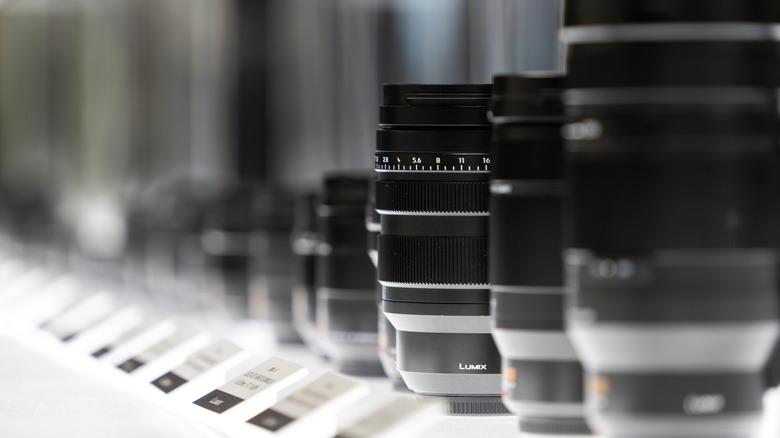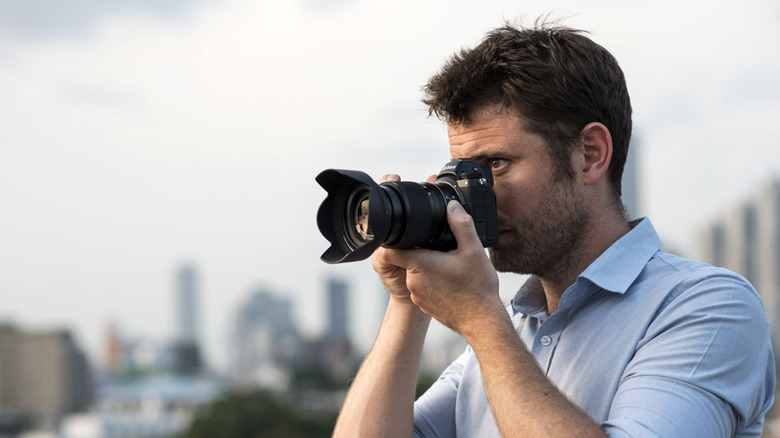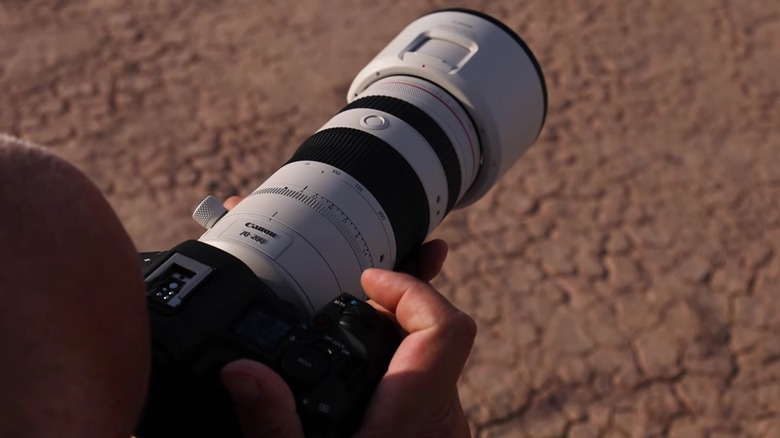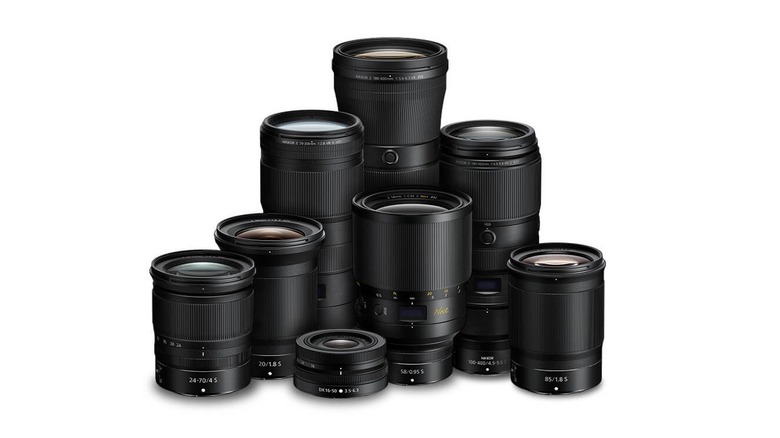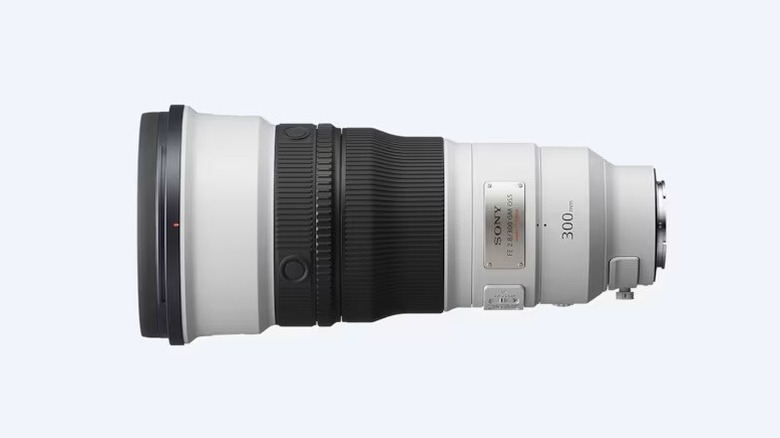Why You Should Buy A New Lens Instead Of Upgrading Your Camera
That new camera model from your preferred manufacturer looks enticing but it likely comes with a hefty price tag and few improvements. Modern cameras are excellent and have desirable features, but more often than not, simply buying a new lens yields better results. Depending on what lens you like, it's usually a cheaper alternative to getting a new camera body.
Changing the kit lens can drastically improve your photos if you are just starting with an entry-level DSLR or mirrorless camera. Kit lenses are like training wheels, an inexpensive tool for new users to learn the ropes. Typically made in bulk, a kit lens is made of relatively cheaper materials to keep the price down. Apart from the body, the glass inside is of acceptable quality, but it's not outstanding. As a result, a kit lens produces average images, especially when stacked against prime lenses. A newer lens won't automatically make anyone a better photographer, but it can help.
Getting a new camera body makes sense if it is old, outdated, lacks the features you need, or can't keep up with modern demands. An old DSLR with a small buffer will struggle to produce satisfactory results when capturing fast-moving action. Illuminated buttons can help astrophotography; higher resolution is a nice perk when doing commercial shoots, and so on. If you already have a camera that produces good photos, a lens upgrade would make them great.
A good lens upgrades image quality
A good sensor is only as good as the lens in front of it. If the lens isn't letting enough light in, a great low-light sensor can only go so far. A new camera body might have a higher resolution, better ISO performance, and rapid autofocus, but it can all be hampered by a low-end lens. A properly compatible lens can yield better corner-to-corner image quality and make a good camera body shine.
Only a lens can achieve image features like depth of field or bokeh. No matter how advanced a camera body is, these physical effects can only be produced by lenses, especially ones with low aperture. Even a prime lens with a low fixed aperture can drastically improve picture quality. A 50mm lens on a full-frame body or a 35mm one on a crop sensor are ideal tools for portrait photos. If you struggle to produce frame-worthy results with a kit lens, it might be time to upgrade to another, better lens.
Low-quality or basic lenses can also have chromatic aberrations or color fringing, resulting in underwhelming photos. While photo editing software can rectify some of these anomalies, there's only so much post-processing can do. A better lens takes care of this common optical phenomenon by default, saving critical editing time.
Better functionality and utility
A camera body can have a huge image buffer, but you won't get usable results if the lens isn't autofocusing fast enough. A newer camera body can improve autofocus, especially if it has an in-camera focusing motor. A newer lens with faster autofocus motors can be lighter on the wallet and be the difference between a great shot and a blurry mess. A reliable autofocusing lens can make shooting challenging subjects easier, such as a fast soccer match or a jittery hummingbird. A silent lens motor is essential when capturing church weddings or making videos.
Many high-quality lenses also come with additional features like rings, buttons, and toggles. Dedicated rings for focus, zoom, and aperture can help with manual focusing and quickly adjusting the settings on the fly. Toggles for autofocus and image stabilization are a neat utility. Some lenses come with a Focus Hold button that locks focus at a specific point, letting you rearrange the composition without having to readjust focus.
Different lenses for different photography
Although the quality of kit lenses has improved over the years, they are still widely produced and intended to get photographers started. Most manufacturers sell the camera bodies separately because many advanced users either already have a lens collection or want to buy something better than the kit lens.
While some lenses, like the 28-70 mm F2.8 lenses, are generally considered essential in any camera bag, there are plenty more that deserve consideration. For wildlife or sports photography, a good-quality zoom lens would perform better than a kit lens with limited reach. A prime zoom lens might cost more, but the results are exponentially better, especially in low-light situations.
Similarly, a macro lens can at least produce 1:1 (at 1x magnification) images that bring the subject closer. So, a macro lens would perform better for insect, plant, or even product photography. A wide-angle lens with a focal length of 35mm or lower, is also an excellent option for capturing architecture and landscapes. A tilt-shift lens may look broken, but it's fantastic for capturing buildings.
You can always get a mainstream prime lens if every lens seems expensive. The 35mm, 50mm, and 85mm prime lenses are popular for multiple reasons. They can be used for street and low-light photography, and many professionals use at least one of these in portraiture. A third-party lens like the Sigma 55mm f/1.2 Art can be an invaluable addition to your camera bag.
A new lens is a better investment
Camera manufacturers don't often change lens mounts. As camera bodies get outdated fairly quickly, a good lens will be a long-term investment. You can use your existing lens collection even if you upgrade to a better body from the same manufacturer. Even older DSLR lenses work great on newer mirrorless cameras, either natively or with an adapter.
A new lens might seem expensive, but you'll save money in the long run. The added benefit would be better photos taken throughout the years. The lenses retain monetary and artistic value almost indefinitely and can be sold quickly. Depending on the condition, a Nikon AF-S NIKKOR 80-200mm f/2.8 D zoom lens from the early 2000s will sell for a handsome price even today. The same can't be said about the camera bodies from the same era.
There's a reason photographers say, "Date the camera, marry the lens." A new lens might demand a bigger upfront investment, but if properly cared for, it will retain its value for decades.
